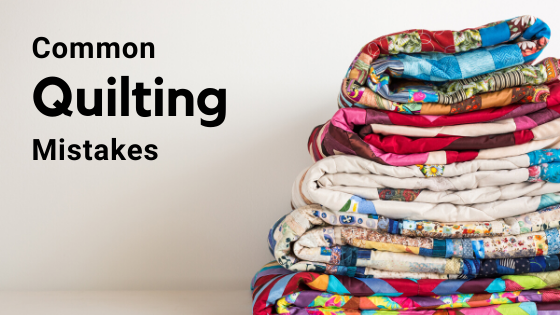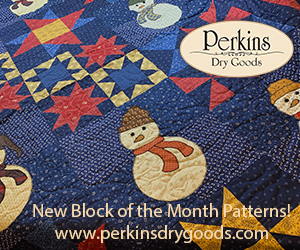
Learning a new skill can be both fun and challenging, but making mistakes along the way is just part of the journey (and part of the fun too). Check out these mistakes made by both beginning and experienced quilters alike to help you become an expert quilter in no time.
Take your time
Someone very wise once told me haste makes waste. This is true for all things in life, but whether you’re working on your first quilt, or your 50th, you can still make very basic mistakes by working on a project too quickly.
Along with taking your time, it’s also important to plan ahead. Planning your quilt in advance can save time later down the line. Make sure you have enough fabric and plan your piecing beforehand to make sure your project is executed seamlessly (no pun intended).
Basic mistakes
One of the largest and most noticeable mistakes beginning quilters make is cutting incorrectly. It’s important to be precise on every quilt, but especially for quilts with a lot of piecing.
Another common mishap is not back stitching. Back stitching is important in securing the ends of pieces, and can contribute to blocks not squaring away.
Two common things beginning quilters get wrong are batting and marking tools. If you’re unsure what batting would be best to use, seek assistance at a fabric store. Also at fabric stores are machine washable markers perfect for quilt projects; buy several so you always have multiple at hand.
Fabric mistakes
Common fabric mistakes include pressing too hard and not buying enough. Again, when in doubt consult an employee at a fabric store if you’re not sure how many yards of fabric you’ll need for a project. Also don’t forget to prewash that fabric once you bring it home from the store, especially if a quilt is going to include colors by white material.
Last but not least, follow pattern directions. Some new patterns are harder than they seem; stick to the directions to make sure the quilt turns out as it should.
What are some things you wish you knew when you started quilting? Quilting is a life-long journey and an ever-evolving art; making some mistakes along the way is just part of the fun.
Thanks to Create with Claudia for the inspiration behind this post.
If you’re looking for more information to guide you in owning a retail business, subscribe to American Quilt Retailer today. Already a subscriber? No worries—join our Facebook group for insights and dialogue from industry specialists like you.



 You heard it here first folks—Marcia Barker has been named the new Director of Education for the International Quilt Festival and Quilt Market.
You heard it here first folks—Marcia Barker has been named the new Director of Education for the International Quilt Festival and Quilt Market.

 If you have had any success making a change in your business, and reaped the benefits financially, we’d love to hear about it! Contact American Quilt Retailer through our Facebook page today.
If you have had any success making a change in your business, and reaped the benefits financially, we’d love to hear about it! Contact American Quilt Retailer through our Facebook page today.



























